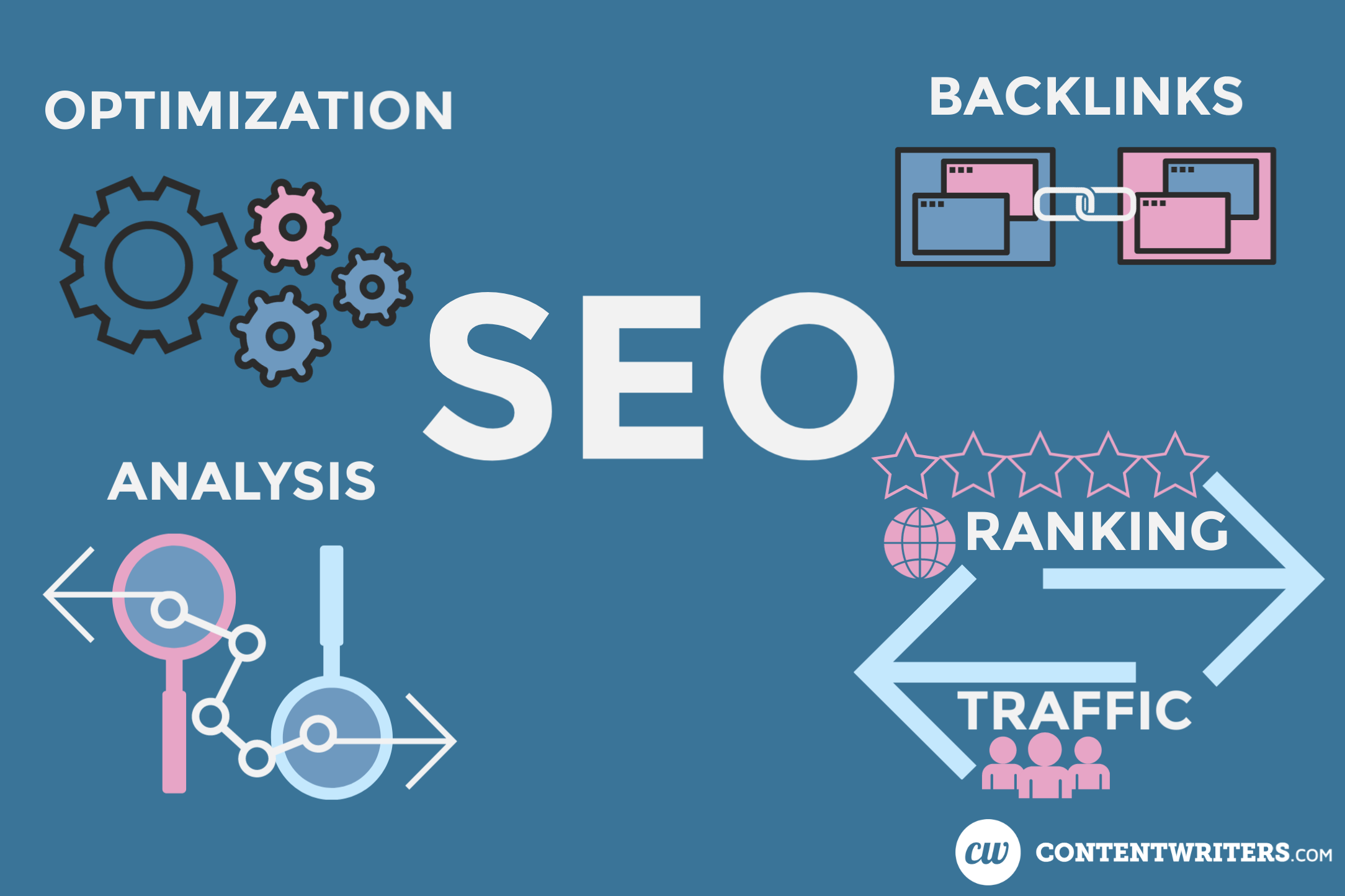
SEO Basics: How to Write an SEO-Friendly Blog Post
Creating and optimizing a blog post takes time. If your content doesn’t earn the traffic you expected, it can mean a lot of effort for little payoff. Every successful blog requires a solid foundation of content, but SEO is how an audience finds and reads it.
If you want to get the most from your blogging efforts, this guide gives you the essentials for a successful search engine ranking.
SEO-Friendly Blogging is Inbound Marketing
According to statistics gathered by OptinMonster:
- Each month, 409 million users click on more than 20 billion pages
- Businesses that blog get 97% more backlinks.
- Blogs were rated the fifth most trustworthy source for gathering information online
A recent study by Brightedge Research revealed that more than half of all website traffic comes from Google and other search engines, and SEO directs 1,000% more traffic than organic social media. Unlike paid ads which stop performing when you stop paying, effective SEO increases free traffic to your website for months or years after it’s published.
However, blogs are only an effective tool for driving traffic and leads when written according to best practices. The blog’s title, structure, headings, and paragraph formatting play a vital role in rankings.
To drive organic leads to your business requires quality and SEO-friendly content consistently. Here are ten ways to ensure the time you or your team spends writing is worth the effort and cost.

1. Create Blog Posts Full of Practical Value
While factors like post length, layout, and targeted keywords all help your posts rank, Google also measures each user’s time on your page. For that reason, an SEO-friendly blog post is a user-friendly blog post.
Writing with authenticity and passion on topics that interest your customers is a good start. However, the best way to figure out what your buyers want is to notice what they like and share.
For SEO purposes, quality content is defined by data. Your most popular topics will convert better and more successfully achieve your marketing objectives.
If you don’t have historic blog data or an active Facebook group to test out topics, you can see what is most liked and shared in competitor’s groups. Quora and Reddit are also handy sites to browse for questions that get a lot of attention.
2. Do Keyword Research Before You Write
Worldwide, bloggers publish about 7.5 million posts a day. As the number of blogs expands exponentially, carefully targeting relevant keyword phrases becomes more essential.
Whether you use the free keyword tool in Google Analytics, Ubersuggest, or another research resource, utilizing phrases that people actively search will connect your post with the right audience.
Ideally, your keyword phrases will have high search volume and plenty of paid advertisers but not be excessively competitive for organic search.
You can also spy on your competitors to see which keywords have worked for them.
A more complex layer of keyword research relates to buyer intent. You want your content to satisfy users searching for your target term.
Trying a bait-and-switch will only hurt your ranking in the long term. It’s better to choose a less popular phrase that fits your content than mislead buyers to try and capture more clicks.
3. Use a Heavily Searched Term in Your Headline
While it’s great to have personality in your writing, the headline is not the place to be cryptic and cute. Use your primary keyword phrase in the headline.
Think of your headlines like a signpost or a house number. It needs to clearly state the purpose of the article for both users and search engines.
4. Grab Their Attention with Your Introduction
On the other hand, your introduction is all about showing off your style and grabbing the reader’s attention.
There are several strategies to engage your audience’s interest. Depending on your topic and style, you can use the introduction to:
- Define the current problem
- Quote an expert or authority
- Describe a typical example
- Pose a question
- Show statistical results
- Make a comparison
- Outline a debate
Make sure to include an important keyword phrase in the introduction. However, you’ll get better results from keywords if you use them sparingly and naturally in the text.

5. Format Your Post for Easy Scanning
Headers help search engine web crawlers define your post’s content. They also help users scan for the details they want.
Use keyword phrases in your headers wherever they make sense and fit naturally. After your headline (H1) provides an overview of your topic, your H2s and H3s act like an outline and show the subtopics within the article.
Headers, short paragraphs, bullet points, and other easy-to-read formatting offer several advantages:
- They make your content accessible to read and scan
- They help you optimize for Google’s Featured Snippets, and the People Also Ask sections
- They are practical for readers on a mobile device
6. Do the Topic Justice
Since 2014, the best-performing blogs have gotten longer. Studies show that posts between 1500 and 2000 words perform best in search results. Longer posts also tend to receive more likes and mentions on social media.
When you create an article to publish online, you compete with hundreds of other posts already written. To outrank competitors, your job is to solve the user’s problem or answer their question better than it has been done before.
Google isn’t ranking blogs based on their length, but they are interested in the number of backlinks from other websites to your article. An in-depth post that thoroughly addresses a topic and includes images and references to authoritative studies is more likely to get links and shares.
Not every topic warrants 1500 to 2000 words. Shorter or even longer articles may be the norm in your industry. To find out how long to make your blog posts, search for your target keywords and see what already ranks one through ten on the first page.
Aim to publish a blog that out-does your competition in all aspects, including word length, formatting, and information. Would someone searching for this phrase easily find the answers they need from your article?
7. Link to Authoritative Websites and Cornerstone Content
While backlinks from other websites are more important for organic ranking than links inside your blog, careful use of internal and external links helps establish you and your blog as an authority.
External links to outside websites help support data-driven points or add useful information beyond the scope of your article. Selecting authoritative websites that already rank on Google improves the credibility of your website while adding spam links will damage your online reputation both with search engines and users.
Internal links direct readers to additional information on your website that may interest them. It keeps them on your website longer, which is good for SEO.
When you consistently link your articles to specific blogs or pages on your website, the search engines consider them cornerstone content. These are the pages you most want to rank high in SEO results.
8. Optimize On-Page SEO
In addition to items we’ve already covered, like your headline, scannable layout, and keyword usage, there are three other critical on-page elements to optimize your blog for search engines.
Meta Tag
The meta tag or meta description is the snippet of text that appears below the headline on the search engine results page (SERP). Most website platforms have a place to enter your desired meta description, although Google may select another snippet of text to display.
Keep your meta description between 50 and 160 characters to ensure the whole thing displays on the SERP. Start with an action word like ‘discover’ or ‘outperform’ and use your primary keyword phrase in your description.
Image Alt Text
Search engines cannot see your images, so the image alt text is an opportunity to provide a context for the image and include a keyword phrase.
URL
Your URL is an additional opportunity to inform search engines about the content of your article. Don’t default to a post number or generic tag. Use your keyword phrase at the end of your URL address.
9. Keep Old Posts Fresh by Updating Content
One nice thing about using blogging for your inbound marketing is that you don’t have to constantly develop new content ideas. Keep old articles fresh by updating your content.
If you have high-performing older posts, you can write new ones on the same topic but from a different angle. If you have low-performing older posts, you can give them new life with updated information and an improved format.
It takes an average of seven repetitions to learn something, so readers appreciate familiar content in an updated format or delivered from a fresh perspective.
Rewriting your old articles also revives them for Google. It shows search engines that your website is alive and relevant.
Finally, the web changes constantly, and old external links may no longer work. Updating old content is an opportunity to make sure your external links are still valid.
10. Share and Promote Your Content
Once you’ve researched, written, and published your post, don’t leave it to Google to discover you! Help the search engines find you by getting it out there.
Share your blog on social media. Send it to your email list and invite them to share it. Offer to write guest posts on other high-traffic blogs and link back to your article.
Blogging is Great Marketing When Done Right
Not everyone who starts a blog builds significant traffic. An estimated 80% of the blogs launched in 2020 floundered and failed. People start with a great idea but lack the consistent effort and expertise to reap the rewards.
Done right, blogging is powerful inbound marketing. It builds your online reputation and gets your company name in front of people as an authority in the field. SEO optimized blogs bring in leads who are already familiar with your products and services and who already like and trust you.
The longer and more consistently you publish, the more significant your inbound traffic can be. A little careful planning using the ten tips outlined in this article can slowly but surely lead your blogs to the top of the SERP.
Joan Weisman’s strong research skills, SEO knowledge, adaptability of style and voice, and passion for staying current make her an asset for freelance web content, SEO, and copywriting.




